Employee Training Tools Roundup: Upgrade Your Toolbox

Whether you’re running compliance training, providing sales staff with new on-the-job product training, or educating your thought leaders on soft skills, the online training tools for the task are essential. To help you make a choice, we’ve selected and compared top employee training tools, depending on the training methods you use or intend to use.
1. Learning Platforms
Learning platforms are one of the key corporate training tools that allow you to host and deliver your learning packages to employees. Be it a traditional LMS, a hosted course platform, or a microlearning platform, your business will definitely need one of them for employee training.
Learning management systems (LMSs)
If you have ever delivered an online course to your employees, chances are it was hosted on an LMS.
An LMS as a virtual space where employees go to learn, collaborate, and assess their knowledge. It helps automate different aspects of online employee training and deliver content efficiently. However, systems range widely, so it’s essential to choose carefully. To learn more about LMS features and how to choose a learning platform, check out our LMS selection guide and a guide on how to create an LMS RFP.
Your own unique needs will determine which training platform is best suited to your organization, but here are a couple of popular LMSs that you may want to check out:
Moodle: Free open source and very flexible LMS, but you will likely need specialists to help you implement and manage it.
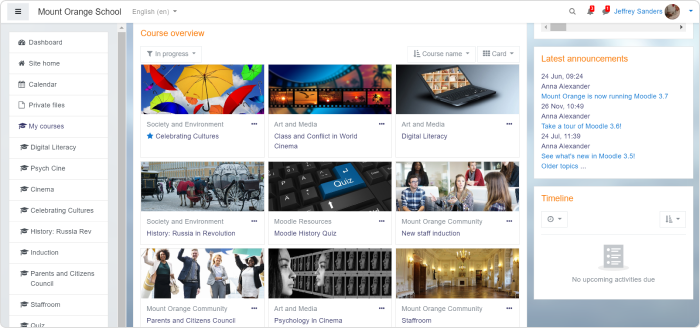
iSpring Learn: A simple to use LMS solution to boost any learning and development initiative. It’s fairly easy to deploy the system, enroll employees in specific learning paths, and get a real picture of learning performance with insightful reports.
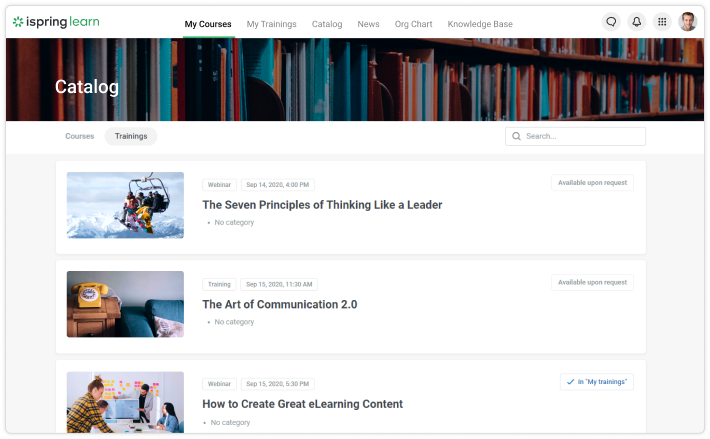
To see iSpring Learn in action, just request a demo, it’s live and totally free. Plus, you can always put iSpring Learn to the test within a free 30-day trial.
Hosted course platforms
Hosted platforms offer e-courses from many different providers. They serve as a storefront and allow individuals and companies to build, display, and sell their products. This employee training tool also handles learner registration, marketing, and the eCommerce side of things for you.
Microlearning platforms
Microlearning platforms enable you to deliver content to learners in easily absorbed bite-sized chunks. They usually feature a fast and easy-to-use authoring tool which allows you to build up microcourses using text, images, video, and other existing assets.
Some popular microlearning platforms include:
Learner Mobile: A versatile platform that allows you to create simple eLearning courses with videos, images, and quizzes in a flash.
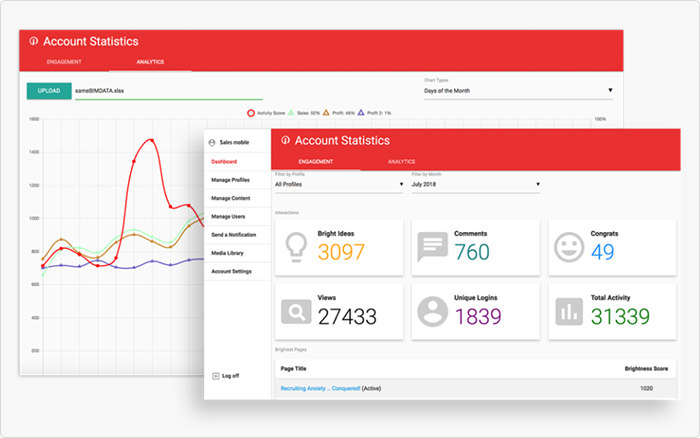
EduMe: Another platform with microlearning courses designed for mobiles that works across all devices. It also has ready-made templates for creating courses consisting of text, images, videos, links, and quizzes.
Also read:
- Best Corporate Learning Management Systems (LMS)
- LMS Benefits For Recruiters, HR, Sales and Commercial Directors
- How to Create a Moodle Quiz
- The Ultimate Guide to Lecture Capture
- Retail Sales Training
- Remote Employee Onboarding
2. Web-Conferencing Tools
Web-conferencing, in general, and webinars or virtual classrooms in particular, are extremely powerful modern tools that enable you to train staff remotely.
Let’s see how they work and which tool you may wish to use in your training programs.
Tools for videoconferencing
Video conferencing needs no introduction – chances are you already use it at work. In employee training, it can be particularly useful to provide live support from experts by live-streaming the subject matter expert and letting learners interact with them via voice or chat.
Most popular video conferencing platforms now have features such as screen share, on-screen annotations, ‘raising a hand’ to ask questions, and even whiteboard features.
Some recommended video conferencing software includes WebEx’s GoToMeeting, Zoom, and JoinMe.
It is great when such platforms work seamlessly with an LMS. One of such examples is iSpring Learn which has an integration with Zoom.

iSpring Learn enables you to host web meetings and training sessions directly from your learning portal, and collects the statistics on visits and viewer activity.
Webinar platforms
Webinar technology is best suited for employee training that is typically one-way, e.g., a lecture, presentation, workshop, or a seminar. The restrictive interactive elements that help learners to receive and discuss topics in real-time typically include a shared screen, a live chat, and polls.
Most popular webinar tools include GoToWebinar and WebEx.

Virtual classrooms
These generally include features to facilitate an engaging learning experience like tests and polls, interactive whiteboards, screen-in-screen views, media sharing, and in-session activities. They also allow you to gather stats on learner attendance, session activity, and more.
Virtual classroom software that is worth taking a look at includes WebEx’s GoToTraining and Zoho Showtime.
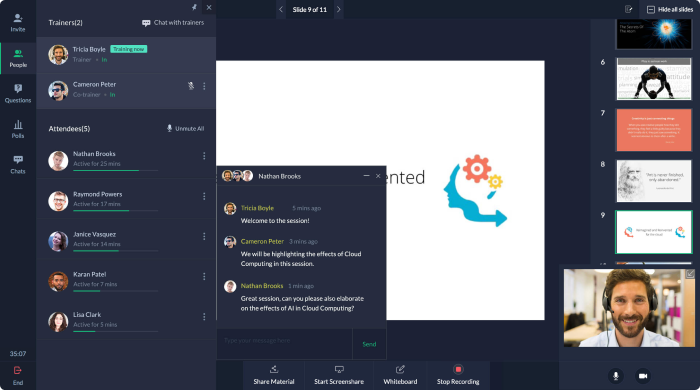
3. Knowledge Repositories
A knowledge repository or knowledge base is a dynamic storage place for information. This type of software is a great addition to your employee training toolkit, enabling your workforce to access the information they need to get work done at any time and from any device.
Knowledge repositories are often included in other software platforms as a discrete module. However, a lot of standalone options also exist that you can integrate into your existing structure.
Knowledge bases commonly allow you to set up a knowledge structure with several levels or tiers; for example, Category > Section > Topic, and these structures can be customized to suit your organization.
Some popular customer management systems (CMSs) that include highly regarded knowledge-base modules are Zendesk and Freshdesk. Standalone options that integrate well with almost any platform and have unlimited customization options include Knowledge Owl.
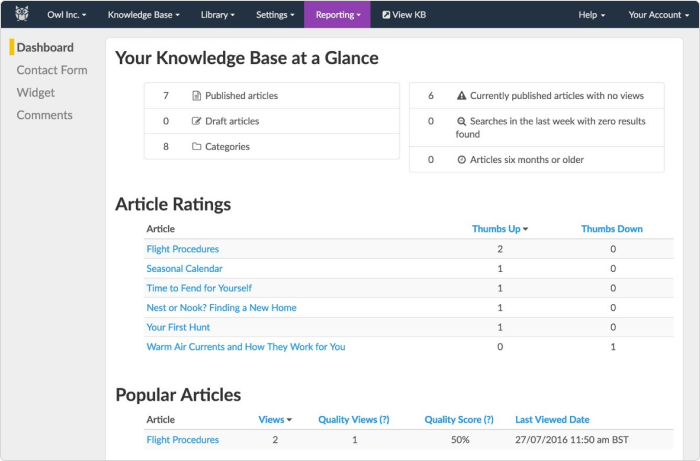
4. Content Creation Tools
There are many different types of content creation tools, and they will often excel at creating particular learning materials: digital courses, training videos, images, schemes and infographics, and more. Let’s see what you may find useful for each case.
Course authoring tools
Authoring tools are designed to create interactive eLearning content. Some of them will let you create eLearning courses from existing content quickly and easily.
One such tool is iSpring Suite. It allows you to build online courses with quizzes, dialogue simulations, and other truly interactive elements. This is how an eLearning created with iSpring Suite looks:
You can start a free 14-day trial that is a fully functional version of iSpring Suite.
If you’re a microlearning enthusiast, consider using iSpring Page. It is specifically designed to create adaptive microcourses that look beautiful and serve well for mobile learning. iSpring Page makes the course development process as simple as posting on social media.
Here’s an example of a microcourse you can create with iSpring Page in a matter of minutes:
Graphics & Design
Capturing static screenshots and screen interaction sequences is useful when developing systems training, software guides, and other training materials for employees. Here are some helpful tools:
Canva: This allows you to create tailored graphics and infographics for custom eLearning development, or use one of their many templates.

Hypersnap: A powerful tool for screen capturing and manipulating static images from your screen.

Photoshop: An incredibly powerful tool that has a steep learning curve.

Placeit: A web-based platform that lets you quickly place your own images onto backgrounds and create mockups.
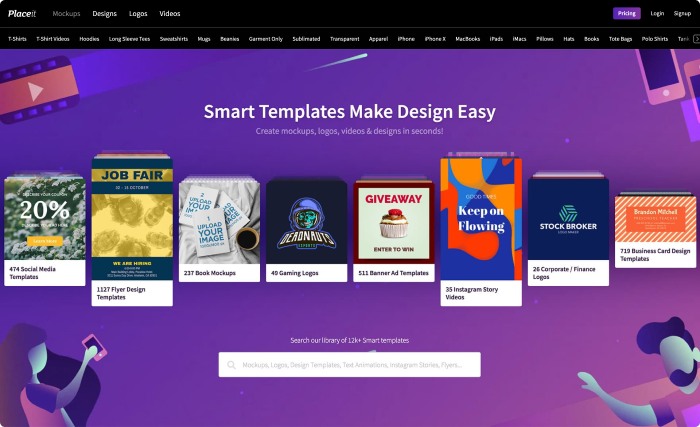
Video and audio
Video is the ‘now’ format, and you will find all the necessary options for creating training videos in some authoring toolkits. For example, iSpring Suite has a built-in video studio that allows you to record screencasts and webcam video to train employees to work with software systems or provide video tutorials on other topics.

Here are some other tools that will help you create, edit, and host videos for employee training:
Wistia: A tool for securely hosting video and high-speed streaming. Wistia is often used by organizations that have invested in developing great training content and don’t want to be ripped off.
Audacity: If you need to get a bit more creative with your video or eLearning narration, this free, open-source audio editor is a good bet. This is also a great tool for creating audio for podcasts, webinars, and other training content.

YouTube and Vimeo: Simple tools for sharing and hosting training videos; all you need to do is register for a free account.
Document creation
You will still need to create nicely designed text documents for most employee training programs.
Microsoft Office: Word, Powerpoint, and Excel online, plus various other ancillary apps, make it easy to create traditional training type documents, collaborate, and share them with employees.
G-Suite: Google Sheets, Docs, and Slides let you create notes, FAQs, presentations, worksheets, and templates with the added benefit of being online and shared.
5. Communication Tools
Communication is essential in every stage of the training process, from course production to fruitful student interactions. It can be achieved using many different tools, from the traditional to the latest in cutting-edge tech. Here are some options to consider.
Email: Old? Yes, but still an effective mode of communication.
Social media: It makes sense to leverage employees’ preference for social media and use it to communicate with learners in a timely and natural manner.
Skype: Almost everyone has a Skype account, so it’s a great way to keep in touch with and manage remote members of a training team if you don’t want to invest in a standalone communication platform such as Basecamp.

Slack: Slack is essentially a chat room for your whole company, designed to replace corporate email. It allows you to set up channels and organize instant communication by group and private chats.
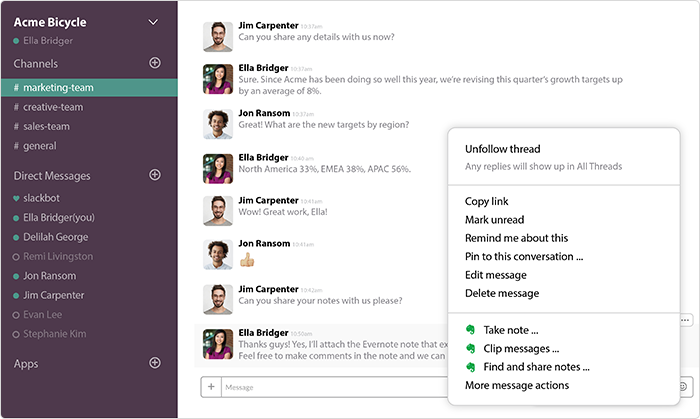
6. Project Management Tools
Managing and delivering training projects on time and within budget is not easy. A project management tool can come in useful and add to the arsenal of training and development software.
Trello: Being the most popular ‘Kanban’ based online platform, Trello lets you build interactive boards, create tasks, and add cards and attachments to streamline group collaboration.
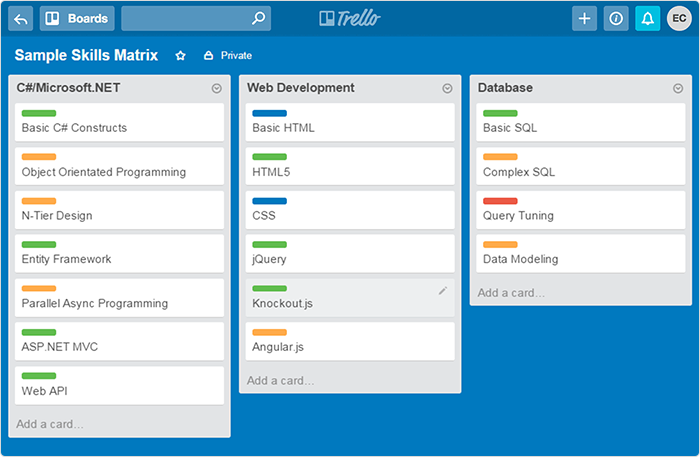
FAQ
Here are a few more things which you might want to know.
What are the 4 methods of training?
The most common methods of employee training are instructor-led training, eLearning, blended learning, and role-playing scenarios.
What are the 3 benefits of employee training?
The list of the benefits includes but not limited to 1) increased efficiency; 2) increased motivation; 3) reduced employee turnover.
To Sum Up
There are so many great employee training tools available, and this article has recommended some key solutions within each category that we’re sure you will find useful. Feel free to share which employee development tools you and your organization use. We’d love to hear about them in the comments.





